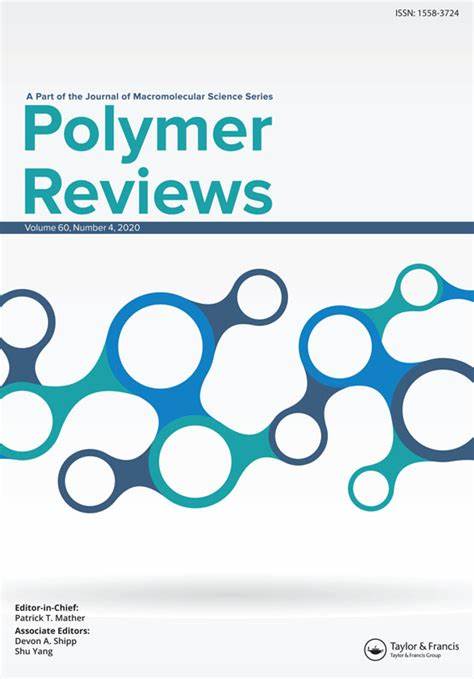2-异丙基-2-恶唑啉(Co)聚合物的改性、性能及应用研究进展
IF 11.9
2区 化学
Q1 POLYMER SCIENCE
引用次数: 1
摘要
摘要2-异丙基-2-恶唑啉均聚物(iPrOx)及其共聚物近年来得到了广泛的研究,人们对iPrOx的兴趣也在不断增长。聚(2-异丙基-2-恶唑啉)(PiPrOx)被称为热响应性假肽,在接近人体温度的水溶液中表现出相变,对许多细胞系无毒。这些事实使得这种聚合物对许多生物应用具有潜在的吸引力。PiPrOx在化学结构上与聚n -异丙基丙烯酰胺(PNIPAM)相似,被认为是这种所谓的“金标准”热敏聚合物的替代品,但这两种聚合物在性能上的显着差异值得注意。为了控制性能,将其直接转化为应用的可能性,iPrOx与各种不同的单体共聚,并且可选地对所得共聚物进行各种改性。本文综述了近年来PiPrOx和iprox基共聚物的研究成果和进展。结合近年来的研究进展,介绍了iproc基(co)聚合物的性能,旨在促进其在生物医学领域的巨大潜力。本文收集了iproc基(co)聚合物的改性可能性、结构-性能关系及其在生物医学领域的应用等方面的信息,并对iproc基(co)聚合物的未来前景进行了一些推测。本文章由计算机程序翻译,如有差异,请以英文原文为准。
Recent Advances in Modifications, Properties and Applications of 2-Isopropyl-2-Oxazoline (Co)Polymers
Abstract The homopolymer of 2-isopropyl-2-oxazoline (iPrOx) and iPrOx copolymers are extensively studied in recent years, and the interest on them is still growing. Poly(2-isopropyl-2-oxazoline) (PiPrOx), known as thermoresponsive pseudopeptide, exhibits a phase transition in aqueous solution at a temperature near human body temperature and is nontoxic to many cell lines. These facts make this polymer potentially attractive for many bioapplications. PiPrOx is similar in chemical structure to poly(N-isopropylacrylamide) (PNIPAM) and is considered as the alternative to this so-called “gold standard” thermoresponsive polymer, however significant differences in properties of these two polymers are worth attention. To control the properties, that directly translate into application possibilities, iPrOx was copolymerized with a wide range of different monomers, and, optionally, the obtained copolymers have been variously modified. This review summarizes the few-years-back research accomplishments and progress in studies on PiPrOx and iPrOx-based copolymers. Considering the recent developments, the properties of iPrOx-based (co)polymers are shown, aiming at promoting their great potential in the biomedical field. Having gathered the information on modification possibilities, structure-property relationship and applications, especially in the biomedical field, a bit of speculation on the future prospects of iPrOx-based (co)polymers is given.
求助全文
通过发布文献求助,成功后即可免费获取论文全文。
去求助
来源期刊

Polymer Reviews
工程技术-高分子科学
CiteScore
24.80
自引率
0.80%
发文量
21
审稿时长
6 months
期刊介绍:
Polymer Reviews is a reputable publication that focuses on timely issues within the field of macromolecular science and engineering. The journal features high-quality reviews that have been specifically curated by experts in the field. Topics of particular importance include biomedical applications, organic electronics and photonics, nanostructures, micro- and nano-fabrication, biological molecules (such as DNA, proteins, and carbohydrates), polymers for renewable energy and environmental applications, and interdisciplinary intersections involving polymers.
The articles in Polymer Reviews fall into two main categories. Some articles offer comprehensive and expansive overviews of a particular subject, while others zero in on the author's own research and situate it within the broader scientific landscape. In both types of articles, the aim is to provide readers with valuable insights and advancements in the field of macromolecular science and engineering.
 求助内容:
求助内容: 应助结果提醒方式:
应助结果提醒方式:


